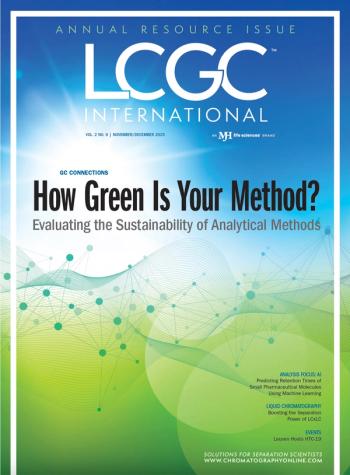
- The Column-10-26-2015
- Volume 11
- Issue 19
UHPLC for Queen Bees
Bees are vital to our food chain through their pollination of key crops. However, numbers are seriously declining as a result of climate change, changing land usage, and the use of pesticides. The role of the queen bee in the colony is also of great importance to the survival of the group. Without a queen bee the colony cannot survive. Data on the effects of environmental stressors on queens is scarce, therefore a group of scientists from Switzerland have investigated the impact on queens of western honey bees (
Apis mellifera
) using ultrahigh-performance liquid chromatography–tandem mass spectrometry (UHPLC–MS–MS) to confirm the pesticide quantities that are often present in the environment.
1
The team theorized that exposure to field-realistic concentrations of neonicotinoid pesticides would significantly reduce the performance of the queen as a result of changes in behaviour, and reproductive anatomy and physiology. To test this, the group exposed developing queens to environmentally-relevant concentrations of the common neonicotinoid pesticides thiamethoxam and clothianidin. Both pesticides are widely applied in global agricultural ecosystems and are therefore available to pollinators, but are currently subjected to two years of restricted use in the European Union because of concerns over their safety. Treatments were administered via pollen supplements that were prepared from bee-collected pollen and honey (3:1 by mass) obtained from non-intensive agricultural areas of Switzerland. Supplements for the neonicotinoid treatment were additionally spiked with 4 ppb thiamethoxam and 1 ppb clothiandin to represent environmentally relevant concentrations observed in the pollen of treated crops. These amounts were confirmed (4.16 ppb and 0.96 ppb for thiamethoxam and clothianidin, respectively) using UHPLC–MS–MS. Queens were allowed to sexually mature. Flight behaviour was observed daily for 14 days; production of worker offspring was observed weekly for four weeks. In pesticide-exposed queens, reproductive anatomy (ovaries) and physiology (sperm quality and quantity), rather than flight behaviour, were affected and more than likely corresponded to a reduction in queen success (alive and ability to produce worker offspring). This study highlights the detrimental effect of neonicotinoids to queens of environmentally and economically important social bees. In addition, it further strengthens the need for stringent risk assessments to safeguard biodiversity and ecosystems vulnerable to these elements. - K.M.
Reference
1. G.R. Williams et al.,
Sci. Rep
.
5
, 14621; doi: 10.1038/srep14621 (2015).
Articles in this issue
about 10 years ago
Plus or Minus What?about 10 years ago
Advancing Synthetic Polymer Developmentabout 10 years ago
Agilent Opens Training Centre in Singaporeabout 10 years ago
Reproducible HILIC Method for Paralytic Shellfish Toxinsabout 10 years ago
Vol 11 No 19 The Column October 26, 2015 Europe and Asia PDFabout 10 years ago
Vol 11 No 19 The Column October 26, 2015 North American PDFabout 10 years ago
Mars to Open Food Safety Center in ChinaNewsletter
Join the global community of analytical scientists who trust LCGC for insights on the latest techniques, trends, and expert solutions in chromatography.



